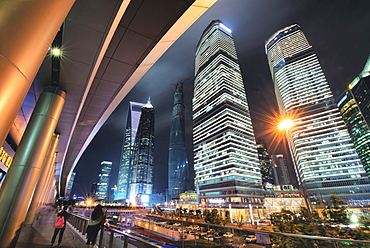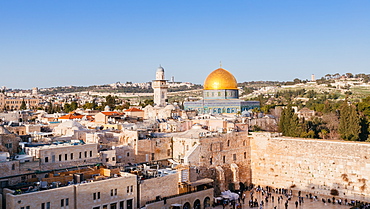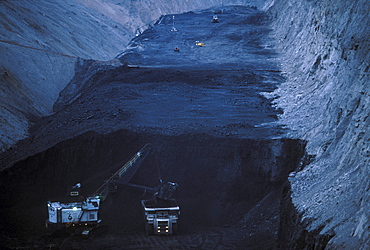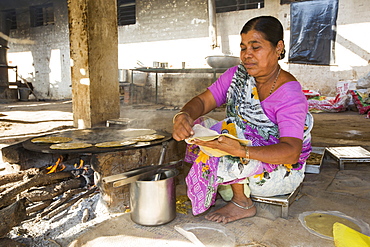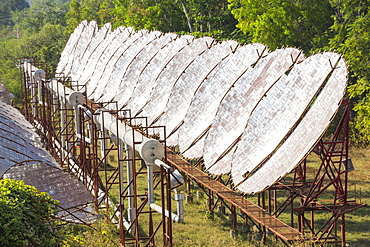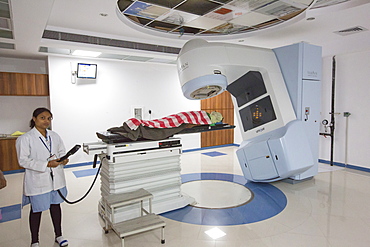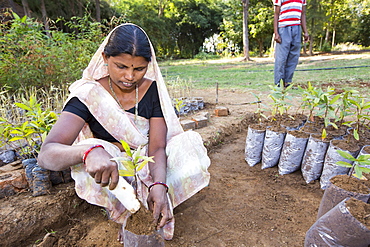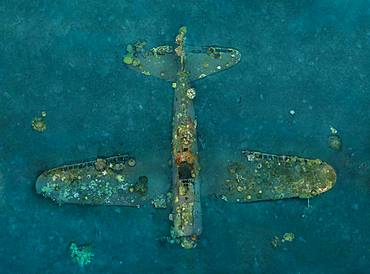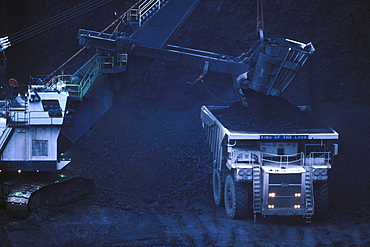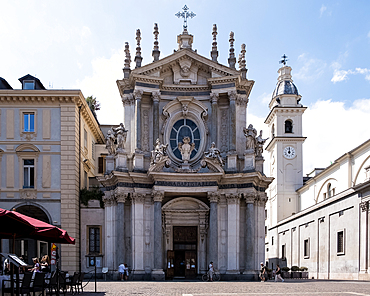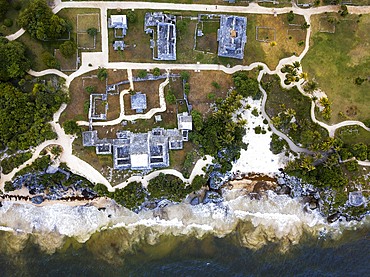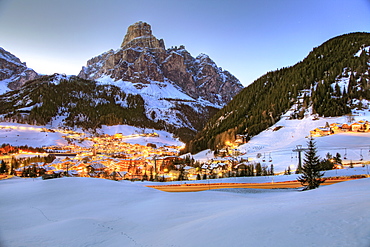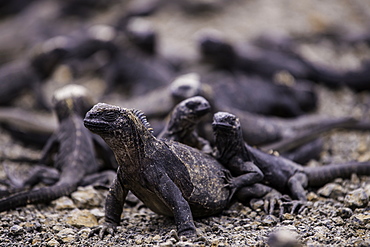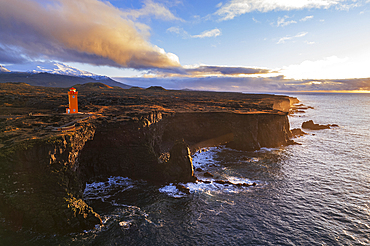Recent searches
Loading...
1383-70 - The Kulamba Traditional Ceremony of the Chewa people takes place every year on the last Saturday in August near Katete. The Chewa who also live in Mozambique and Malawi come to pay homage to their Chief Kalonga Gaia Uni.
1382-70 - stone sculpture by Indulis Ranka in the Folk Song park,Turaida Museum Reserve,Sigulda,Gauja National Park,Vidzeme Region,Latvia,Baltic region,Northern Europe
1384-70 - Flamingo tour advertising at small coastal settlement on Gulf of Mexico, Celestun, Yucatan, Mexico
737-70 - Beach view from bungalow at Laem Yai Hut Home, Hat Sai Kaew beach, Ko Samet Island, Rayong, Thailand, Asia
718-70 - Cap Cavalleria Beach, North Coast of Menorca, Balearic Islands, Spain, Europe
774-70 - Enniskillen Castle on the banks of Lough Erne, Enniskillen, County Fermanagh, Ulster, Northern Ireland, United Kingdom, Europe
744-70 - Votive shield showing the king slaying two lions, from the tomb of the pharaoh Tutankhamun, discovered in the Valley of the Kings, Thebes, Egypt, North Africa, Africa
1171-70 - Wide angle view of ultra modern architecture in Shanghai Pudong at night, Shanghai, China, Asia
765-70 - Tuaregs playing haraghba, Southwest desert, Libya, North Africa, Africa
795-70 - Young woman sitting on bench at the end of jetty, Maldives, Indian Ocean, Asia
1219-70 - A lone tree stands defiantly within the waters of Lake Wanaka with the snow capped peaks of Mount Aspiring National Park beyond, Otago, South Island, New Zealand, Pacific
812-70 - Ski jumper, blue sky and ski jump, Oslo, Norway, Scandinavia, Europe
813-70 - Finnish flag and medieval Town Hall, Old Town Square, Porvoo, Uusimaa, Finland, Scandinavia, Europe
489-1329 - High Force Waterfall, 70 feet (21 m) high, Upper Teesdale, County Durham, England, United Kingdom, Europe
1161-7002 - Fresh French bread, pain Campagne, on sale for 1 euro 70 at food market at La Reole in Bordeaux region of France
832-215012 - Austroraptor cabazai, carnivore, lived 70 million years ago, Giant Dinosaurs of Argentina exhibition, Lokschuppen, locomotive shed, Rosenheim, Upper Bavaria, Bavaria, Germany
1211-70 - The women of Kasalagu Womens Cooperative drying clean Shea nuts to make Organic Shea butter for Tama, Tamale, Northern Region, Ghana, West Africa, Africa
1132-70 - View over the Neumarkt Christmas Market below the Frauenkirche, Dresden, Saxony, Germany, Europe
1001-70 - Blood vein (Timandra comae) (Geometridae), Bulgaria, Europe
1111-70 - Hindu girl cooking while her father plays musical instrument in Pushkar, Rajasthan, India, Asia
1243-70 - Temple Mount, Dome of the Rock, Redeemer Church and Old City, Jerusalem, Israel, Middle East
847-70 - Late afternoon on Mheilein beach on Harris, looking north towards Lewis, Outer Hebrides, Scotland, United Kingdom, Europe
911-70 - PHD scientist Ian Bartholomew using dye tracing techniques as part of a study to measure the speed of the Russell Glacier near Kangerlussuaq, Greenland, Polar Regions
940-70 - Garden orb-weaver spiderlings (Eriophora sp.) under leaf, Hopkins Creek, New South Wales, Australia, Pacific
857-33973 - Men and boys on bikes ride past a towering, ancient minaret, outside of Ghazni, Afghanistan, October 1, 2002. Made of brick decorated with Kufic and Naksh Script and floral motifs, the minaret dates back to the early 12th century and was built by Sultan Masud III of the Ghaznavid Dynasty, who ruled over an empire encompassing much of Afghanistan, Northern India, Persia and Central Asia. The minaret was once three times as tall as its current 70 feet, and is thought to have been part of a large mosque complex. Now an important truck stop on the road to Kandahar, Ghazni, located on the Lora River at the elevation of 2,225 meters, is the capital of Ghazni province and is a market for sheep, wool, camel hair cloth, corn, and fruit-it also continues to be a haven for Taliban insurgents.
857-25624 - Black Thunder coal mine on Thunder Basin National Grassland, WY. Mike Hockett and Cary Klein are operationg the Ursa Major drag line. This is the largest operating piece of earth moving equipment in North America and removes about 150 feet of overburden to get to a 70 foot seam of coal. Royalties from the coal on the grassland generation about $30 million a year.
857-33969 - Men on bikes ride past an ancient brick minaret toward the old walls and citadel of the town of Ghazni, Afghanistan, October 1, 2002. Made of brick decorated with Kufic and Naksh Script and floral motifs, the minaret dates back to the early 12th century and was built by Sultan Masud III of the Ghaznavid Dynasty, who ruled over an empire encompassing much of Afghanistan, Northern India, Persia and Central Asia. The minaret was once three times as tall as its current 70 feet, and is thought to have been part of a large mosque complex. Now an important truck stop on the road to Kandahar, Ghazni, located on the Lora River at the elevation of 2,225 meters, is the capital of Ghazni province with a population of 35,900, and is a market for sheep, wool, camel hair cloth, corn, and fruit.
995-70 - Mute Swan (Cygnus olor) flying silhouetted against sunrise information, slow shutter speed Angus Scotland, UK
1189-70 - Ring-necked Parakeet (Psittacula krameri), Richmond Park, Greater London, England, United Kingdom, Europe
911-10640 - The Muni Seva Ashram in Goraj, near Vadodara, India, is a tranquil haven of humanitarian care. The Ashram is hugely sustainable, next year it will be completely carbon neutral. Its first solar panels were installed in 1984, long before climate change was on anyones agenda. Their energy is provided from solar panels, and wood grown on the estate. Waste food and animal manure is turned inot biogas to run the estates cars and also used for cooking. Solar cookers are also used, and the air conditioning for the hospital is solar run. 70 % of the food used is grown on the estate. They provide an orphanage, schools for all ages, vocational training, care for the elderly, a specialist cancer hospital withstate of the art machinary, and even have a solar crematorium. This shot shows a cook preparing chapatis on a biofuel stove.
911-10635 - The Muni Seva Ashram in Goraj, near Vadodara, India, is a tranquil haven of humanitarian care. The Ashram is hugely sustainable, next year it will be completely carbon neutral. Its first solar panels were installed in 1984, long before climate change was on anyones agenda. Their energy is provided from solar panels, and wood grown on the estate. Waste food and animal manure is turned inot biogas to run the estates cars and also used for cooking. Solar cookers are also used, and the air conditioning for the hospital is solar run. 70 % of the food used is grown on the estate. They provide an orphanage, schools for all ages, vocational training, care for the elderly, a specialist cancer hospital withstate of the art machinary, and even have a solar crematorium. This shot shows a Hematology Analyzer for analyzing blood in one of the labs in the specialist cancer hospital.
911-10639 - The Muni Seva Ashram in Goraj, near Vadodara, India, is a tranquil haven of humanitarian care. The Ashram is hugely sustainable, next year it will be completely carbon neutral. Its first solar panels were installed in 1984, long before climate change was on anyones agenda. Their energy is provided from solar panels, and wood grown on the estate. Waste food and animal manure is turned inot biogas to run the estates cars and also used for cooking. Solar cookers are also used, and the air conditioning for the hospital is solar run. 70 % of the food used is grown on the estate. They provide an orphanage, schools for all ages, vocational training, care for the elderly, a specialist cancer hospital withstate of the art machinary, and even have a solar crematorium. This shot shows solar panels that focus the suns rays on heat exchangers to boil oil, which is then sent down to the kitchens below to heat the cookers.
911-10641 - The Muni Seva Ashram in Goraj, near Vadodara, India, is a tranquil haven of humanitarian care. The Ashram is hugely sustainable, next year it will be completely carbon neutral. Its first solar panels were installed in 1984, long before climate change was on anyones agenda. Their energy is provided from solar panels, and wood grown on the estate. Waste food and animal manure is turned inot biogas to run the estates cars and also used for cooking. Solar cookers are also used, and the air conditioning for the hospital is solar run. 70 % of the food used is grown on the estate. They provide an orphanage, schools for all ages, vocational training, care for the elderly, a specialist cancer hospital withstate of the art machinary, and even have a solar crematorium. This shot shows the solar air conditioning for the Ashram's hospital.
911-10636 - The Muni Seva Ashram in Goraj, near Vadodara, India, is a tranquil haven of humanitarian care. The Ashram is hugely sustainable, next year it will be completely carbon neutral. Its first solar panels were installed in 1984, long before climate change was on anyones agenda. Their energy is provided from solar panels, and wood grown on the estate. Waste food and animal manure is turned inot biogas to run the estates cars and also used for cooking. Solar cookers are also used, and the air conditioning for the hospital is solar run. 70 % of the food used is grown on the estate. They provide an orphanage, schools for all ages, vocational training, care for the elderly, a specialist cancer hospital withstate of the art machinary, and even have a solar crematorium. This shot shows a Varian nuclear proton therapy machine in the specialist cancer hospital.
911-10637 - The Muni Seva Ashram in Goraj, near Vadodara, India, is a tranquil haven of humanitarian care. The Ashram is hugely sustainable, next year it will be completely carbon neutral. Its first solar panels were installed in 1984, long before climate change was on anyones agenda. Their energy is provided from solar panels, and wood grown on the estate. Waste food and animal manure is turned inot biogas to run the estates cars and also used for cooking. Solar cookers are also used, and the air conditioning for the hospital is solar run. 70 % of the food used is grown on the estate. They provide an orphanage, schools for all ages, vocational training, care for the elderly, a specialist cancer hospital withstate of the art machinary, and even have a solar crematorium. This shot shows a woman planting trees for onward growth in the Ashrams forests.
1228-70 - Castleton village, The North Yorkshire Moors National Park, Yorkshire, England, United Kingdom, Europe
911-10638 - The Muni Seva Ashram in Goraj, near Vadodara, India, is a tranquil haven of humanitarian care. The Ashram is hugely sustainable, next year it will be completely carbon neutral. Its first solar panels were installed in 1984, long before climate change was on anyones agenda. Their energy is provided from solar panels, and wood grown on the estate. Waste food and animal manure is turned inot biogas to run the estates cars and also used for cooking. Solar cookers are also used, and the air conditioning for the hospital is solar run. 70 % of the food used is grown on the estate. They provide an orphanage, schools for all ages, vocational training, care for the elderly, a specialist cancer hospital withstate of the art machinary, and even have a solar crematorium. This shot shows the girls school.
857-94641 - The Muni Seva Ashram in Goraj, near Vadodara, India, is a tranquil haven of humanitarian care. The Ashram is hugely sustainable, next year it will be completely carbon neutral. Its first solar panels were installed in 1984, long before climate change was on anyones agenda. Their energy is provided from solar panels, and wood grown on the estate. Waste food and animal manure is turned inot biogas to run the estates cars and also used for cooking. Solar cookers are also used, and the air conditioning for the hospital is solar run. 70 % of the food used is grown on the estate. They provide an orphanage, schools for all ages, vocational training, care for the elderly, a specialist cancer hospital withstate of the art machinary, and even have a solar crematorium. This shot shows solar panels that focus the suns rays on heat exchangers to boil oil, which is then sent down to the kitchens below to heat the cookers.
1275-70 - Chongqing city skyline panorama, with Jialing River, Jiangbei CBD in the view, Chongqing, China, Asia
1238-70 - Tea ceremony in Shodensanso, Kyoto, Japan, Asia
860-287440 - Tara Pacific expedition - november 2017 Zero wreck, vertical view Orthomosaic from 3D photogrammetry (13500 x 10000 px). D: 15 m Kimbe Bay, papua New Guinea, Coral growth on this wreck is from a period of 74 years ! The ZERO, is a Japanese WW2 fighter plane wreck. This Zero wreck was discovered in January 2000 by local William Nuli while he was freediving for sea cucumbers. He asked the Walindi Plantation Resort dive team if they might know what it was, and when they investigated they uncovered the intact wreck of a Zero fighter, resting on a sedimented bottom in 15 m depth. This World War II Japanese fighter is almost completely intact. The plane is believed to have been ditched, the pilot is believed to have survived, but was never found on the island. He never returned home. Maybe he disappeared in the jungle? On 26th December 1943, during the battle of Cape Gloucester, the Japanese pilot made an emergency landing, ditching his Mitsubishi A6M Zero plane into the sea approximately 100m off West New Britain Province. The plane was piloted by PO1 Tomiharu Honda of the 204st K?k?tai. His fate is unknown but it is believed the he made a controlled water landing after running out of fuel and survived. Although he failed to return to his unit, the plane was found with the throttle and trim controls both set for landing and the canopy was open. There are no visible bullet holes or other shrapnel damage and the plane is still virtually intact after over 70 years underwater. It is a A6M2 Model 21 Zero, made famous for its use in Kamikaze attacks by the Japanese Imperial Navy. The wreck has the Manufacture Number 8224 and was built by Nakajima in late August 1942.
860-287442 - Tara Pacific expedition - november 2017 Kimbe Bay, papua New Guinea, Zero wreck: Coral growth on this wreck is from a period of 74 years ! D: 15 m The ZERO, is a Japanese WW2 fighter plane wreck. This Zero wreck was discovered in January 2000 by local William Nuli while he was freediving for sea cucumbers. He asked the Walindi Plantation Resort dive team if they might know what it was, and when they investigated they uncovered the intact wreck of a Zero fighter, resting on a sedimented bottom in 15 m depth. This World War II Japanese fighter is almost completely intact. The plane is believed to have been ditched, the pilot is believed to have survived, but was never found on the island. He never returned home. Maybe he disappeared in the jungle? On 26th December 1943, during the battle of Cape Gloucester, the Japanese pilot made an emergency landing, ditching his Mitsubishi A6M Zero plane into the sea approximately 100m off West New Britain Province. The plane was piloted by PO1 Tomiharu Honda of the 204st K?k?tai. His fate is unknown but it is believed the he made a controlled water landing after running out of fuel and survived. Although he failed to return to his unit, the plane was found with the throttle and trim controls both set for landing and the canopy was open. There are no visible bullet holes or other shrapnel damage and the plane is still virtually intact after over 70 years underwater. It is a A6M2 Model 21 Zero, made famous for its use in Kamikaze attacks by the Japanese Imperial Navy. The wreck has the Manufacture Number 8224 and was built by Nakajima in late August 1942.
1231-70 - Camogli is a fishing village and tourist resort located on the west side of the peninsula of Portofino. Liguria, Italy, Europe
1167-70 - Dawn mist, Mount Moran, Oxbow Bend, Snake River, Grand Teton National Park, Wyoming, United States of America, North America
799-70 - The Pilgrim Fathers Memorial commemorating the depature point of The Mayflower in 1620 from the city of Southampton, Hampshire, England, United Kingdom, Europe
857-33971 - Afghan men pause on the road with an ancient brick minaret and many shrines in the background, outside of Ghazni, Afghanistan, October 1, 2002. Made of brick decorated with Kufic and Naksh Script and floral motifs, the minaret dates back to the early 12th century and was built by Sultan Masud III of the Ghaznavid Dynasty, who ruled over an empire encompassing much of Afghanistan, Northern India, Persia and Central Asia. The minaret was once three times as tall as its current 70 feet, and is thought to have been part of a large mosque complex. Now an important truck stop on the road to Kandahar, Ghazni, located on the Lora River at the elevation of 2,225 meters, is the capital of Ghazni province with a population of 35,900, and is a market for sheep, wool, camel hair cloth, corn, and fruit, and continues to be a haven for Taliban insurgents.
908-70 - Bengal Snapper (Lutjanus bengalensis) Shoal.
Seychelles
(RR)
1315-70 - Fishing along the Malecon in late afternoon, Havana, Cuba, West Indies, Caribbean, Central America
1104-70 - Marina at The Pearl Qatar, Doha, Qatar, Middle East
857-25623 - Black Thunder coal mine on Thunder Basin National Grassland, WY. Mike Hockett and Cary Klein are operationg the Ursa Major drag line. This is the largest operating piece of earth moving equipment in North America and removes about 150 feet of overburden to get to a 70 foot seam of coal. Royalties from the coal on the grassland generation about $30 million a year.
975-70 - Open road going over the hill. Stampede road, linking to Stampede Trail, made famous in 1992 by the adventures of Chris McCandless, who also dies on the Trail. Denali, Alaska, USA
860-292443 - Tek rebreather diver at a depth of 70 meters with a DPV specially equipped with 60,000 lumen lighting and 12 Gopro to carry out a 3D survey of a karstic cave submerged for over 14,000 years, Passe Bateau Sud, Mayotte Lagoon
802-70 - A climber deep water soloing above the sea on the limestone cliffs near St. Govan's Head, South Pembrokeshire, Pembrokeshire Coast National Park, Wales, United Kingdom, Europe
824-70 - Tsheri Om leans out of her farmhouse window, Phobjika Valley, Bhutan, Asia
794-70 - Hong Kong mass transit railway system (MTR), Hong Kong, China, Asia
1373-70 - View of Santa Cristina, a Baroque style, Roman Catholic church that mirrors the adjacent church of San Carlo and faces the Piazza San Carlo, Turin, Piedmont, Italy, Europe
1369-70 - Aerial view taken by drone of natural landscape in Landmannaugar area on a summer day, Iceland, Polar Regions
1163-70 - A man ploughs his terraced-field, Dhampus, Annapurna Conservation Area, Nepal, Asia
1314-70 - Happy woman in bikini lying in turquoise water in the natural pool of Seychelles beach, Anse Marron, La Digue, Seychelles, Indian Ocean, Africa
1186-70 - Sunbeds and palm trees, Ile aux Cerfs, Black River, Mauritius, Indian Ocean, Africa
1350-6597 - Aerial views of El Castillo and the Ruins of the Mayan temple grounds at Tulum, Quintana Roo, Yucatan, Mexico. Tulum is the site of a pre-Columbian Mayan walled city which served as a major port for Coba, in the Mexican state of Quintana Roo. The ruins are situated on 12 meter 39 ft tall cliffs along the east coast of the Yucatán Peninsula on the Caribbean Sea in the state of Quintana Roo, Mexico. Tulum was one of the last cities built and inhabited by the Maya; it was at its height between the 13th and 15th centuries and managed to survive about 70 years after the Spanish began occupying Mexico. Old World diseases brought by the Spanish settlers appear to have resulted in very high fatalities, disrupting the society, and eventually causing the city to be abandoned.
1195-70 - Hardest hit was a 650 kilometers stretch of the somali coastline between garacad (mudung region) and xaafuun (bari region), which forms part of the puntland province near the horn of africa. The tsunami resulted in the death of some 300 people and extensive destruction of shelters, houses and water sources as well as fishing gear. The livelihoods of many people residing in towns and small villages along the somali indian ocean coastline, particularly in the northern regions, were devastated
1372-70 - Close up of the upper body and head of a giant Buddha statue agains a blue sky, Hill of the Buddha, Sapporo, Hokkaido, Japan, Asia
1235-70 - Salt pans in Marsaskala, Malta, Mediterranean, Europe
1376-70 - View at sunset towards the Irish Sea, Furness Peninsula and Cumbrian Coast, Sandy Gap, Walney Island, Lancashire, England, United Kingdom, Europe
1350-6599 - Aerial views of El Castillo and the Ruins of the Mayan temple grounds at Tulum, Quintana Roo, Yucatan, Mexico. Tulum is the site of a pre-Columbian Mayan walled city which served as a major port for Coba, in the Mexican state of Quintana Roo. The ruins are situated on 12 meter 39 ft tall cliffs along the east coast of the Yucatán Peninsula on the Caribbean Sea in the state of Quintana Roo, Mexico. Tulum was one of the last cities built and inhabited by the Maya; it was at its height between the 13th and 15th centuries and managed to survive about 70 years after the Spanish began occupying Mexico. Old World diseases brought by the Spanish settlers appear to have resulted in very high fatalities, disrupting the society, and eventually causing the city to be abandoned.
748-70 - Polar Bear with cubs, (Ursus maritimus), Churchill, Manitoba, Canada
770-70 - Limestone pavements near Chapel-le-Dale, Yorkshire Dales National Park, Yorkshire, England, United Kingdom, Europe
1336-70 - Small bamboo house in the Longsheng rice terraces, Guangxi, China, Asia
801-1343 - A Waterpocket Fold highlighting the erosion of tilted rock layers, formed 50 to 70 million years ago, Capitol Reef National Park, Utah, United States of America, North America
1352-66 - RAF Red Arrows flypast during 2022 Trooping the Colour celebrations, marking the Queen official birthday and her 70 year Jubilee, London, England
607-70 - Lion (Panthera leo), Okavango Delta, Botswana, Africa
749-70 - African penguins at Boulder beach in Simon's town, near Cape Town, South Africa, Africa
806-70 - Piazza Duomo at dusk, Brescia, Lombardy, Italy, Europe
1175-70 - View of Alta Badia and Sassongher Dolomites, Corvara, South Tyrol, Italy
1320-70 - Grouping of Sea Iguanas resting on each other, Isabela Island, Galapagos, Ecuador, South America
939-70 - Spinetail devil rays (Mobula mobular) engaged in sexual courtship in Honda Bay, Palawan, The Philippines, Southeast Asia, Asia
763-70 - A flamboyant couple (professional dance duo called Danzamor) enjoying a cigar in a bar in Habana Vieja, Havana, Cuba
832-64146 - Official sign to warn of a radar control with a TraffiTower speed camera, on the federal road B224, Braukstrasse, in a 70 kilometers per hour speed-limit zone, Bottrop, North Rhine-Westphalia, Germany, Europe
857-66658 - Seven workers are disassembling computers at TES-AMM Shanghai, which was founded on September 21, 2005, currently has 67 employees of which 26 are workers. With an annual production capacity of 10,000 tons, it has only treated 2,000 tons of e-waste from its founding more than a year ago. 'The biggest problem is that there isn't an e-waste recycling channel in China. The biggest chunks of raw materials we get are from government bodies, which are upgrading their equipments, and electronic appliances franchises that are washing out their outdated inventories. We don't have any imported e-waste because that's banned by the government. It takes a worker no more than ten minutes to disassemble a computer, and each worker can deal with between 60 to 70 computers a day,' says Janice Wu, who's the Environment & Quality Management Dept. Manager and Plant Manager Assistant.
1298-70 - Autumn at Wainwath Falls with Cotterby Scar in the distance, near Keld, Swaledale, Yorkshire Dales, North Yorkshire, England, United Kingdom, Europe
1306-70 - Lifeguard station on South Beach, Miami Beach, Florida, United States of America, North America
832-186548 - Duesseldorf International Airport, Emirates Airbus A330 on the taxiway to the runway, followed by KLM Cityhopper Fokker 70, Boeing 737, landing in Duesseldorf, North Rhine-Westphalia, Germany, Europe
832-64144 - Sabotage, speed camera damaged by a paint attack, on the federal road B227, Wuppertaler Strasse, in a 70 kilometers per hour speed-limit zone, Essen, North Rhine-Westphalia, Germany, Europe
832-70 - Old man cultivating sugar cane for the production of bio diesel, Montero, Santa Cruz, Bolivia, South America
1304-70 - Bastnas Car Cemetery deep in the forests of the region of Varmland in Sweden, Scandinavia, Europe
1311-70 - Northwest view of Sedona from within the saddle on Cathedral Rock, Sedona, Arizona, United States of America, North America
745-70 - Morning ablutions, Hindu pilgrims bathing in the River Ganges (Ganga), Varanasi (Benares), Uttar Pradesh state, India, Asia
1361-70 - Aerial view of the orange Svortuloft lighthouse on top of the basalt cliffs at sunset, Snaefellsbaer, Snaefellsjokull National Park, Snaefellsens peninsula, Vesturland, West Iceland, Iceland, Polar Regions
10-70 - Canterbury Cathedral, UNESCO World Heritage Site, Canterbury, Kent, England, United Kingdom, Europe
1339-70 - Colorful nails on the crossed hands of a lady in traditional dress, Old Havana, Cuba, West Indies, Central America
1352-65 - RAF Red Arrows flypast during 2022 Trooping the Colour celebrations, marking the Queen official birthday and her 70 year Jubilee, London, England
1185-70 - Leopard (Panthera), South Luangwa National Park, Zambia, Africa
805-1315 - Elaborate floral decorations celebrating 70 years of China framing the Bell Tower, built in 1272, Beijing, China, Asia








